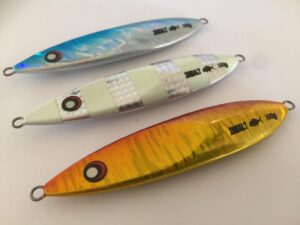Origins of Slow Pitch Jigging Fishing in Japan
Slow pitch jigging, a relatively modern and innovative style of fishing, has its origins deeply rooted in Japan’s long history of fishing culture. It is a technique that involves the use of specialized jigs, rods, and reels to mimic the motion of a distressed or injured baitfish. Slow pitch jigging, unlike traditional high-speed jigging, uses slower, more deliberate movements to attract predatory fish. To understand the origins of slow pitch jigging, we need to explore the evolution of Japan’s fishing practices and how technological advancements shaped this unique style of fishing.
The Early Development of Jigging Techniques
The concept of jigging — using artificial lures to mimic the movement of prey to attract fish — dates back hundreds of years. Traditional jigging techniques in Japan have been used for centuries in various forms, primarily in deep-sea fishing. In the late 1800s and early 1900s, Japan’s fishermen began to experiment with different methods of attracting fish, particularly in offshore waters. The traditional Japanese jigging method involved rapidly retrieving the jig in an up-and-down motion to simulate the movement of baitfish, with the goal of triggering predatory species such as tuna, amberjack, and other deep-sea fish.
However, the style of fishing that would eventually evolve into slow pitch jigging began to take shape in the 1980s. At this time, Japanese fishermen started experimenting with new types of jigs and fishing gear that allowed them to fish in deeper waters with more finesse. This era marked a shift in thinking, moving away from high-speed, aggressive jigging towards more subtle and methodical movements, a technique that would later be identified as slow pitch jigging.
The Emergence of Slow Pitch Jigging
The concept of slow pitch jigging gained traction in Japan in the early 2000s, driven by the efforts of skilled anglers and fishing gear manufacturers. One of the key individuals credited with developing slow pitch jigging is Yoshikazu Fujioka, a prominent figure in Japan’s fishing community. Fujioka, along with other pioneers in the fishing industry, recognized the potential for using slow, rhythmic motions to entice fish in a way that was different from traditional fast jigging techniques.
The primary appeal of slow pitch jigging lies in its ability to mimic the erratic, yet controlled, movements of injured or dying fish. Slow pitch jigs are designed to flutter or wobble in a way that closely resembles the behavior of real baitfish in distress. This realistic motion is achieved by using specialized rods that are flexible yet powerful, paired with reels that allow for precise control of the jig’s movement. The jigs themselves are generally heavy and compact, designed to sink quickly but remain effective at slow speeds.
The method involves anglers lifting the rod in slow, steady pitches, allowing the jig to fall back to the bottom, which simulates a struggling fish. This technique requires patience and precision, as it is not about fast action but rather about subtly provoking fish to bite through a slow and deliberate presentation. The slower the pitch, the more the jig can mimic the natural movements of a wounded or distressed baitfish, making it more appealing to predators.
Technological Advancements and the Spread of Slow Pitch Jigging
The rise of slow pitch jigging was also influenced by advancements in fishing technology. As reel technology improved, especially with the introduction of high-quality, low gear ratio reels, anglers could retrieve jigs at a much slower speed without losing control of the lure’s presentation. This innovation made it easier to execute the slow, deliberate motions required for slow pitch jigging.
By the mid-2000s, slow pitch jigging began to spread beyond Japan’s shores, gaining popularity in other parts of Asia, Europe, and eventually the United States. The technique’s success was not just about the unique way it entices fish but also about the satisfaction it provides to anglers, who appreciate the challenge and precision involved in the technique.
Conclusion
Slow pitch jigging, while a relatively recent innovation, has deep roots in Japan’s rich fishing tradition. Its development was driven by a combination of experimentation with fishing gear, technological advancements, and a keen understanding of fish behavior. Today, slow pitch jigging is a respected and highly effective technique used by anglers around the world, but its origins will always be tied to the waters of Japan and the ingenuity of those who sought a more subtle, methodical approach to fishing.

